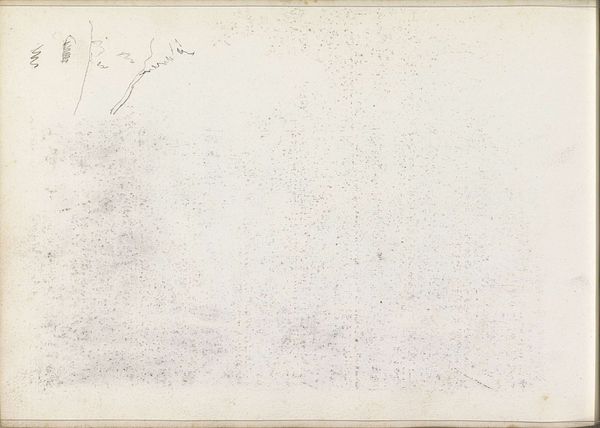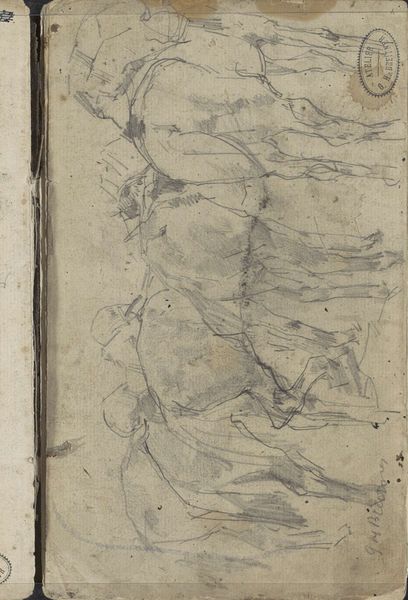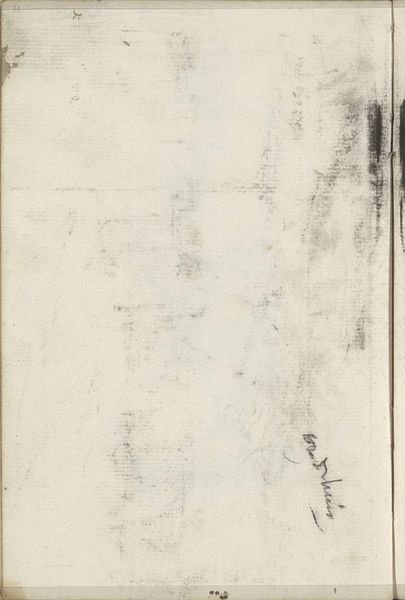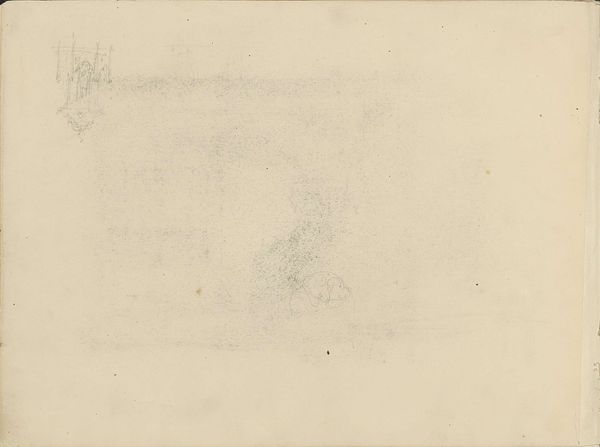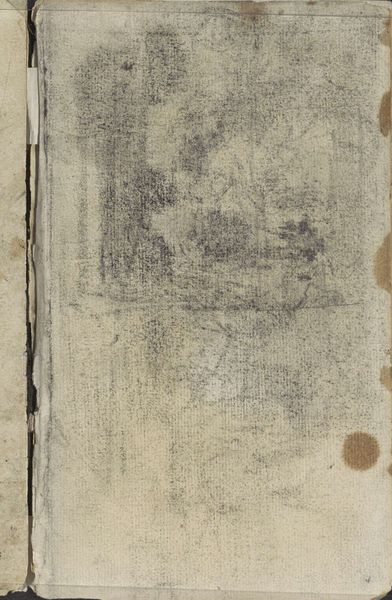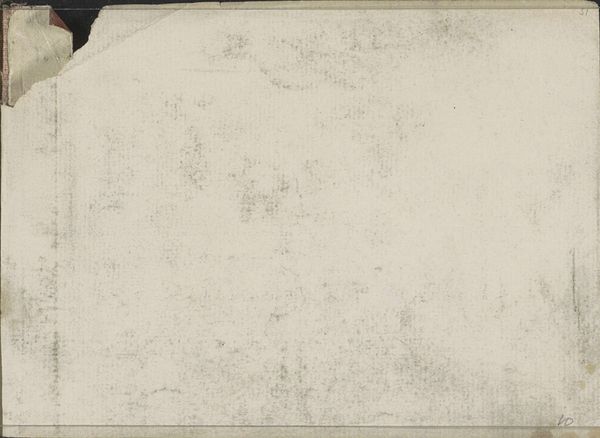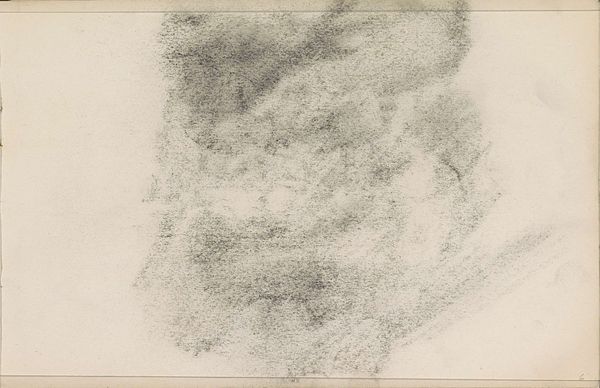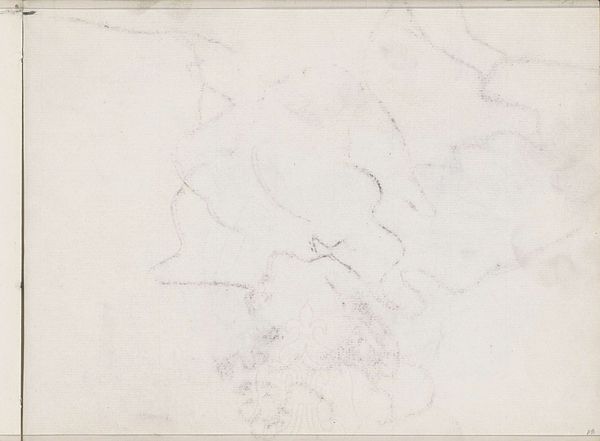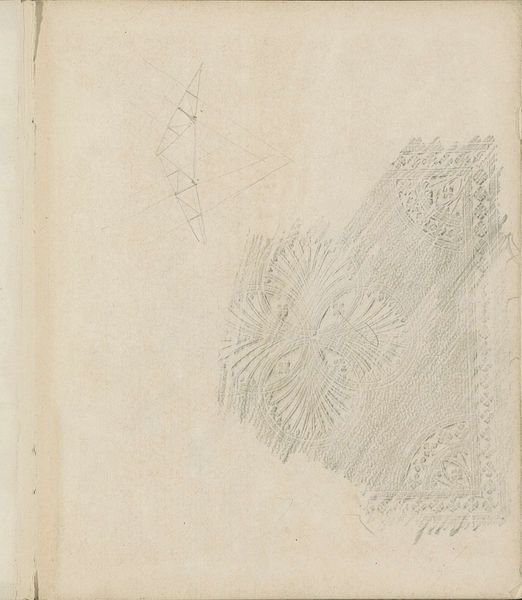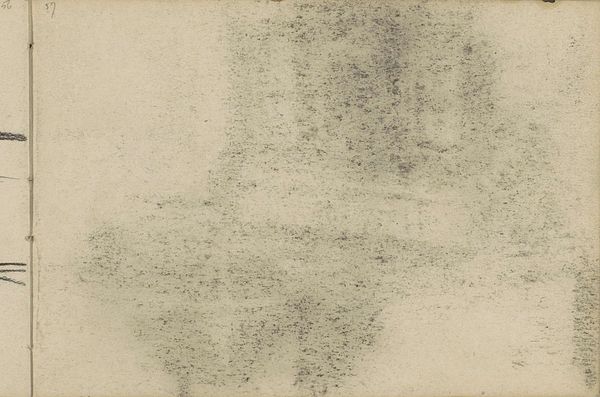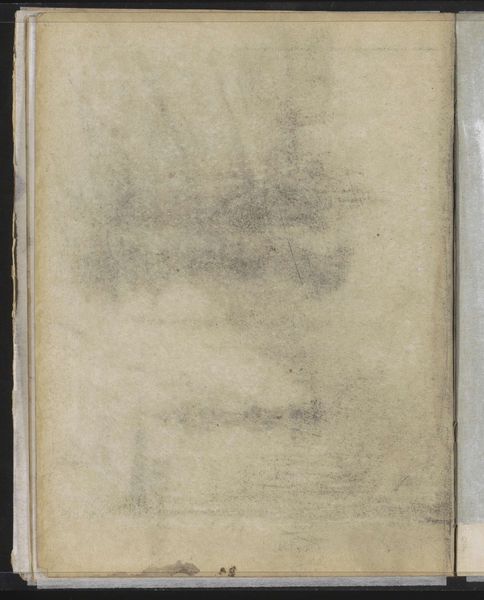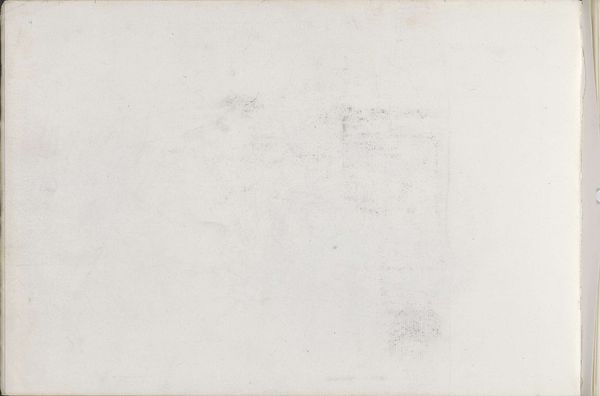
#
amateur sketch
#
aged paper
#
toned paper
#
light pencil work
#
ink paper printed
#
hand drawn type
#
personal sketchbook
#
sketchbook drawing
#
sketchbook art
#
watercolor
Dimensions: height 116 mm, width 162 mm
Copyright: Rijks Museum: Open Domain
Curator: I’m struck by the ghostly atmosphere in this sketchbook spread; it has such a fragile, ephemeral quality. Editor: Indeed. We are looking at "Studie," a work on paper from 1905 by Willem Cornelis Rip. It presents a fascinating look into an artist’s process. The marks are so tentative. Curator: I find the openness almost unsettling. The light pencil work and aged paper invite quiet contemplation, but of what? Is it a landscape only partially realized? A fleeting impression of something else? Editor: The materiality, I think, reveals a story beyond the image itself. The 'toned paper,' as the catalog description mentions, tells of time, the gentle degradation of things left unseen. Rip, within the social confines of his time, might not have viewed such works as truly exhibitable, perhaps. This was maybe just an exploration, yet this image provides us with something much more profound than a complete rendering might. Curator: Perhaps. For me, its value lies precisely in that ambiguity. It becomes a mirror, inviting us to project our own feelings of the vague or the forgotten onto the scene. The repetition of similar forms – are they clouds? Are they hills? – almost reads as an incantation, a repeated gesture intended to summon something more fully into being. Editor: In the broader context, doesn't this remind us that so much art historically was a privilege, and we see, peeking through the formal training, other histories—maybe something about Rip’s lived reality that pushed him to use materials frugally, something about the landscapes or weather or access he had. The emotional charge of those obscured elements is palpable. Curator: Agreed. It asks us to consider what makes an image complete. Maybe this incompleteness is its power; maybe it’s symbolic of all those possibilities of thought that get abandoned at the wayside. It's incomplete, like all memory is. Editor: And in seeing what’s ‘left out’ we become actively involved in not just witnessing this period but judging our present. Curator: I appreciate how this piece, through its openness, gives permission to pause and project our own worlds onto its surface. Editor: Absolutely. It is in this type of work, beyond pure technique, where a work echoes.
Comments
No comments
Be the first to comment and join the conversation on the ultimate creative platform.
